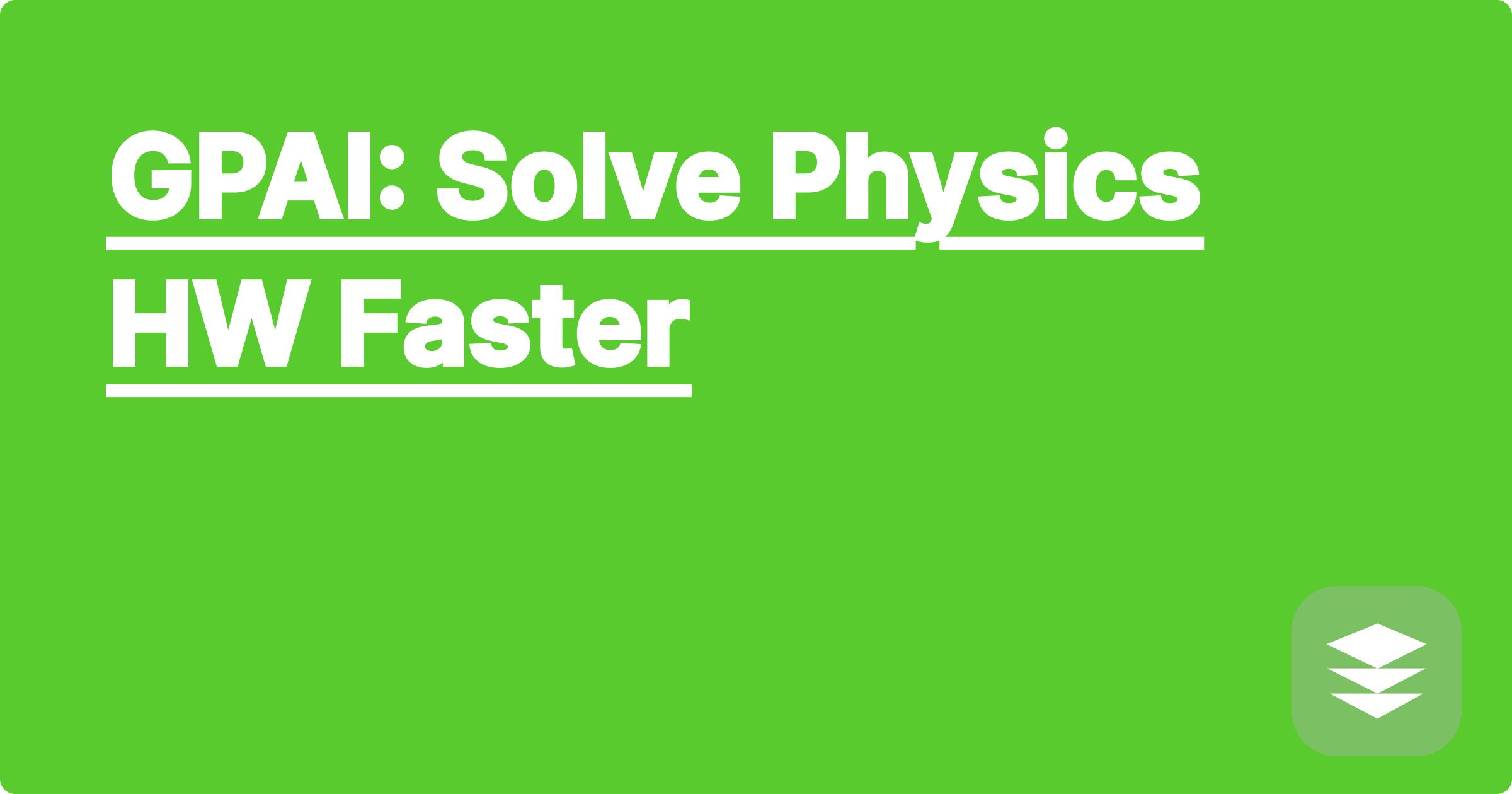
STEM fields, particularly physics, often present students and researchers with complex problem-solving challenges that demand significant time and effort. Tackling intricate physics problems can be a daunting task, requiring a deep understanding of fundamental concepts, mathematical proficiency, and the ability to apply these skills to real-world scenarios. Artificial intelligence (AI) offers a powerful new approach to streamline this process, providing innovative tools that can assist in solving physics homework more efficiently and effectively. These AI-powered tools can not only help students complete assignments faster but also deepen their understanding of the underlying physics principles.
For STEM students and researchers, time is a precious commodity. Juggling coursework, research projects, and other commitments requires efficient time management. AI tools can significantly reduce the time spent on tedious calculations and problem-solving, freeing up valuable time for deeper learning, exploration of advanced concepts, and pursuing other academic endeavors. This enhanced efficiency allows students to focus on developing a strong conceptual understanding of physics rather than getting bogged down in complex mathematical manipulations. Moreover, these tools can be invaluable for researchers, accelerating the pace of scientific discovery by automating complex calculations and data analysis tasks.
Physics problems often involve a multi-step process, requiring students to identify relevant concepts, formulate equations, perform calculations, and interpret the results. This process can be particularly challenging when dealing with complex systems involving multiple variables, intricate mathematical relationships, and abstract concepts. Students often struggle to translate word problems into mathematical equations, choose the appropriate formulas, and execute complex calculations accurately. Furthermore, visualizing and understanding the physical phenomena underlying the problem can be difficult, hindering the ability to develop a comprehensive understanding of the concepts. These challenges can lead to frustration, time wastage, and a lack of confidence in one's problem-solving abilities.
AI-powered tools like ChatGPT, Claude, and Wolfram Alpha offer a novel approach to tackling physics problems. These tools leverage the power of natural language processing, machine learning, and symbolic computation to assist students in various stages of the problem-solving process. ChatGPT and Claude can be used to understand problem statements, identify relevant concepts, and guide the solution approach. Wolfram Alpha excels at performing complex calculations, symbolic manipulations, and providing step-by-step solutions. By combining the strengths of these different AI tools, students can create a powerful workflow that streamlines the entire problem-solving process.
Begin by clearly stating the physics problem to the AI tool, ensuring all relevant information, including given values and desired unknowns, is provided. For example, if using ChatGPT or Claude, you might phrase the problem as: "A ball is thrown vertically upwards with an initial velocity of 20 m/s. Calculate the maximum height reached by the ball and the time it takes to reach that height. Assume g = 9.8 m/s^2." After providing the problem statement, ask the AI to identify the relevant physics concepts and suggest appropriate equations. Once the relevant equations are identified, utilize Wolfram Alpha to perform the necessary calculations. Input the equations and known values into Wolfram Alpha, ensuring correct syntax and units. Wolfram Alpha will then compute the results and often provide step-by-step solutions, showing the intermediate calculations and the final answer. Finally, review the solution provided by the AI, ensuring it aligns with your understanding of the problem and the underlying physics principles.
Consider the problem of calculating the trajectory of a projectile launched at an angle. You can input the initial velocity, launch angle, and gravitational acceleration into Wolfram Alpha. Wolfram Alpha will then calculate the projectile's range, maximum height, and flight time, providing both numerical results and graphical representations of the trajectory. Another example is solving circuit analysis problems. By providing the circuit diagram and component values to Wolfram Alpha, it can calculate the current, voltage, and power across different parts of the circuit. For more conceptually challenging problems, ChatGPT and Claude can assist in breaking down the problem into smaller, manageable parts and guide the solution approach. For instance, if you're struggling with a problem involving conservation of energy, you can ask ChatGPT to explain the concept and provide examples of how it applies to similar problems.
While AI tools can be incredibly helpful, it's crucial to use them effectively and ethically. Don't rely solely on AI to solve problems without understanding the underlying physics concepts. Use these tools as a supplement to your learning, not a replacement for it. Always review the AI-generated solutions and ensure you understand the steps involved. Actively engage with the material, ask questions, and seek clarification when needed. Furthermore, be mindful of academic integrity guidelines and avoid using AI tools in ways that violate your institution's policies. Use AI to enhance your understanding and efficiency, but always ensure your work reflects your own learning and effort.
To fully leverage the potential of AI in your physics studies, explore the different functionalities offered by various AI tools. Experiment with different problem-solving approaches and identify the workflows that work best for you. Develop a strong foundation in fundamental physics principles and mathematical techniques. This foundation will enable you to effectively utilize AI tools and critically evaluate the solutions they provide. Continuously seek opportunities to apply your knowledge to real-world problems and engage in discussions with peers and instructors to deepen your understanding. By combining the power of AI with a strong conceptual understanding and ethical practices, you can significantly enhance your learning experience and achieve academic success in physics.